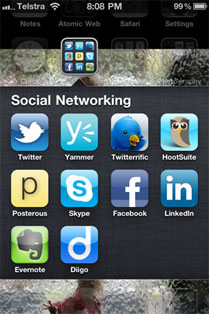Social media as a platform, supports communication and connectivity and is fairly instantaneous and generally public. It has become a popular avenue for individuals to share news, ideas, resources, and spruik their personal opinions. For reasons explained below, I’ve felt compelled to pen a few words regarding a (darker?) side of social media that I find rather sad. In so doing I may just be suggesting that social media exposes the darker side of human nature in a more public way. All the more reason to provide guidelines and models of best practice for people in the workplace and our educational institutions.

There’s been plenty of mainstream media coverage of recent Skype, Twitter, and Facebook controversies in Australia, where people have made inappropriate and immature comments about others that are disappointing and embarrassing. While I find aspects of this unfortunate and disturbing, I understand that it may be simply reflecting what may often happen in a smaller sphere, and not out in public. What surprises me is that the people getting up to this sort of behaviour should know better. Are people more inclined to act this way because they can hide behind their social networking software and not have to say things to someone’s face?
I admire that TV shows such as Q&A invite the participation of social media into the program and allow the audience and viewers to comment. I believe this can be a good thing, but I find that it also encourages and provides a platform for people to take a cheap shot, or be critical without backing up their position. Maybe I’m being naive, but I wonder why there seems to be too much of a willingness to slag off and polarise. I’m not sure if the motivation is to express an alternate view, seeing how clever they can sound, or just to draw attention to themselves. This bothers me enough to the extent that I don’t even want to watch the program, let alone follow the #qanda hashtag. I’m not for a moment suggesting that there are no useful, thoughtful questions and comments that people do make, it’s just the other stuff detracts from the conversation/discussion and often isn’t funny.
I suppose my point is that it can be difficult (but not impossible) to have useful & wholesome debate using social media, it’s just that it often seems to be a bunch of people making noise that irritates, like a dog barking away behind a fence. I’m thankful that at least I can choose not to listen… What do you think?
Oh, and if you’re after some guidance on how to use social media and participate in social networks there’s no excuse as there’s plenty of resources…
Telstra’s 3 Rs of Social Media Engagement
Framework Social Media Guidelines | Australian Flexible Learning Framework
Enterprise: A List of 40 Social media Staff Guidelines (Laurel Papworth)
